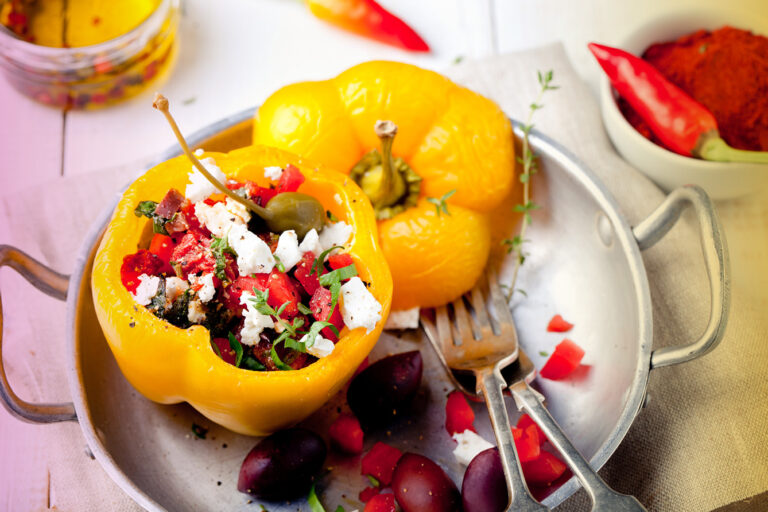Introduction: Bulgarian Cuisine
Bulgarian cuisine is a unique blend of Mediterranean and Eastern European culinary traditions. It is heavily influenced by neighboring countries such as Greece, Turkey, and Serbia. Bulgaria is known for its diverse range of dishes, including hearty stews, grilled meats, and richly spiced curries. However, one of the standout features of Bulgarian cuisine is its emphasis on fresh, colorful salads.
Importance of Salads in Bulgarian Cuisine
Salads are an essential part of Bulgarian cuisine, and they are often served as a starter or side dish. They are made using a variety of fresh and seasonal ingredients, and they are typically dressed with a mixture of oil, vinegar, and spices. Salads are considered to be a healthy and refreshing addition to any meal, and they are a great way to showcase the flavors and textures of Bulgaria’s local produce.
Key Characteristics of Bulgarian Salads
Bulgarian salads are known for their simplicity and purity of flavor. They are made using only a handful of ingredients, which are carefully selected to complement each other. The key characteristics of Bulgarian salads are that they are fresh, colorful, and full of flavor. The use of fresh herbs, such as parsley and dill, is also a common feature in Bulgarian salads.
Tomatoes: The King of Bulgarian Salads
Tomatoes are the star ingredient in many Bulgarian salads. They are typically used in abundance and are chosen for their vibrant color and sweet taste. Tomatoes are often paired with cucumbers, onions, and peppers to create a refreshing and satisfying salad. In Bulgaria, there are many different varieties of tomatoes, including the popular “cherry tomatoes,” which are small, sweet, and bursting with flavor.
Cucumbers: A Staple in Bulgarian Salads
Cucumbers are another staple ingredient in Bulgarian salads. They are chosen for their crisp texture and refreshing taste, and they are often paired with tomatoes to create a classic Bulgarian salad. In Bulgaria, cucumbers are also used to make the popular “tarator” soup, which is a cold soup made with yogurt, cucumbers, and dill.
Peppers: Adding Color and Flavor to Salads
Peppers are a common ingredient in Bulgarian salads, and they are used to add color and flavor to the dish. There are many different varieties of peppers in Bulgaria, including sweet peppers, hot peppers, and bell peppers. Peppers are often roasted or grilled before being added to the salad, which gives them a smoky flavor and tender texture.
Onions: The Unsung Hero of Bulgarian Salads
Onions are an unsung hero of Bulgarian salads. They are used to add a pungent and savory flavor to the dish, and they are often paired with tomatoes and cucumbers to create a classic Bulgarian salad. In Bulgaria, red onions are a popular choice, as they are sweeter and milder than other types of onions.
Feta Cheese: The Perfect Finishing Touch to Bulgarian Salads
Feta cheese is the perfect finishing touch to any Bulgarian salad. It is a salty and tangy cheese that pairs perfectly with the fresh and vibrant flavors of the salad. Feta cheese is often crumbled on top of the salad, which adds a creamy texture and bold flavor. In Bulgaria, there are many different varieties of feta cheese, including the popular “sheep’s feta,” which is made from sheep’s milk and has a rich and creamy taste.

